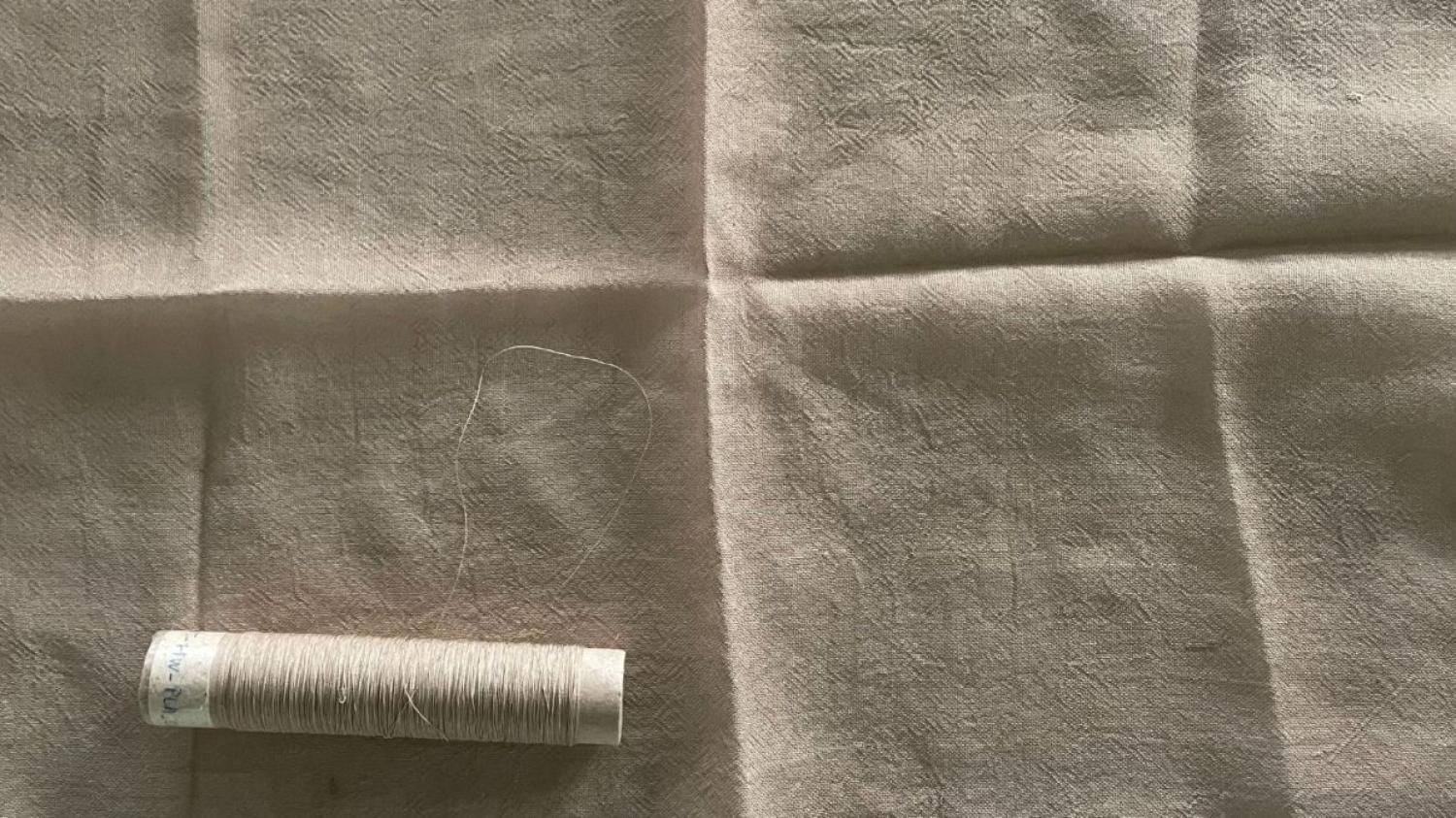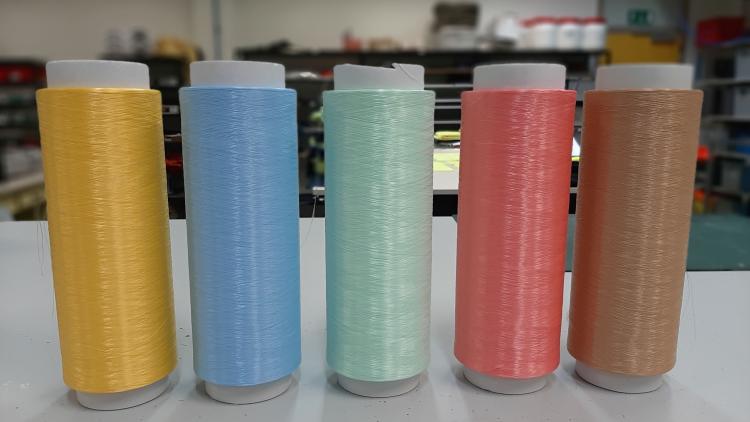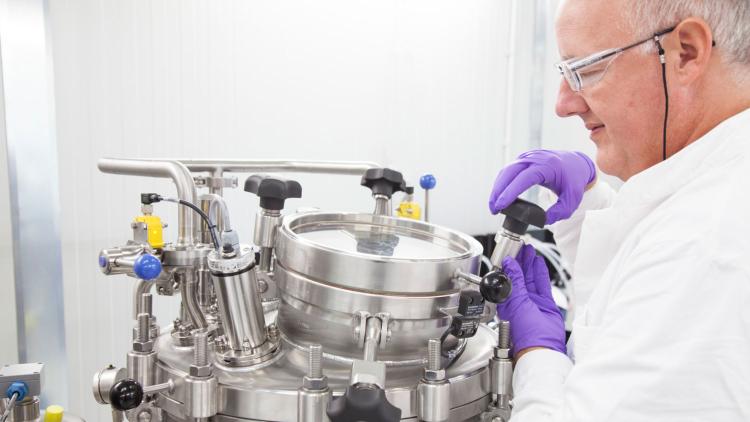Bio-based Hybrid Yarns
Hybrid yarns combine two or more materials with different properties. We combined two bio-based fibres to produce one performance yarn that is strong yet soft, easy to dye, breathable and comfortable against the skin.
Performance wear has grown in popularity alongside technical advances in the sports and leisure industries. These garments demand increased strength and durability from yarns and textiles. Hybrid yarns typically combine two or more high-performance materials, such as cotton and polyester, to gain the advantages of each of the material properties within one yarn.
In HEREWEAR we produced two bio-based fibres with different properties: PLA polymer (Polylactic acid) is strong, rigid and hydrophobic ‘water-hating’, and a man-made cellulosic filament called HighPerCell® which is soft and hydrophilic ‘water-loving’, making it easy to dye, breathable and comfortable against the skin.
In this section you can find out how we created a 100% bio-based performance yarn suitable for the performance apparel industry, by combining PLA and HighPerCell® multi-filaments in a unique Hybrid Yarn.
What are hybrid yarns?
Typically, hybrid yarns are manufactured for technical applications and incorporate fibres made from glass, carbon, Kevlar, basalt (reinforcing materials), conductive materials, and elastomeric materials.
Hybrid yarns can also be created for the clothing industry to combine the different fibre properties of materials like cotton, jute, polyester, nylon, or polypropylene.
Why did we develop a bio-based hybrid yarn?
To decouple textile production from high-impact fossil-based oil there is a need for alternative yarns made from renewable resources that do not compete with food production (like cotton) and do not need hazardous chemicals (like viscose).
Biopolyesters tend to be 25% weaker than conventional fossil-based polyester while man-made cellulosic (MMC) fibres tend to break easily under stress. While filaments are less likely to cause pollution by breaking and shedding fibres than staple fibres, they provide less coverage in the textile leading to transparency in the garment.
Creating a hybrid core-wrapped (single-covered) yarn from PLA and HighPerCell® filaments allows us to produce a high performance 100% bio-based textile for the clothing industry with minimal fibre shedding.
How are hybrid yarns made?
PLA filaments with their higher strength and lower comfort properties form the core of the yarn. HighPerCell® filaments, which are soft and breathable, are then wrapped around the PLA multifilament core using a wrap-spinning or co-mingling machine.
These hybrid yarns can be woven into a performance textile, where tougher fabrics are required. For example, core-wrapped yarns have been used in place of conventional denim for making jeans.
What to do next
Good to know!
- Bio-based core-wrapped (single-covered) yarns made entirely from multi-filaments has never been done before – as far as we know! (hybrid yarns are usually made from staple yarns wrapped around filaments which can then shed fibres more easily).
- The wrap-spinning technology we used provides well-defined hybrid yarns with the mechanical properties of the PLA and HighPerCell® filaments with a final yarn count suitable for clothing.
- Wrap-spinning and commingling machinery already exists in the textile industry and so investment to produce these hybrid yarns is expected to be low.
Here are some highlights from our research:
- The type of hybrid yarn production technique is very important for the fibre distribution in the hybrid yarn.
- A small amount of twist may occasionally be inserted merely to control the filaments and prevent them from splitting apart.
- High twist levels in these yarns should be avoided due to deterioration of their strength.
- A PLA yarn with 60 filaments and a HighPerCell® yarn with 64 filaments were the optimal choice for producing hybrid yarns
- Some of the properties of PLA (thermal stability, laundering, softness) and HighPerCell® (cost, relatively low elasticity, fibrillation tendency) need to be improved to optimise their suitability for hybrid core-wrapped yarns.
Suggested reading & viewing
Bionic yarn - an example of commercially available core-wrapped yarns from rPET and cotton: https://bionicyarn.com/material/hlx/







